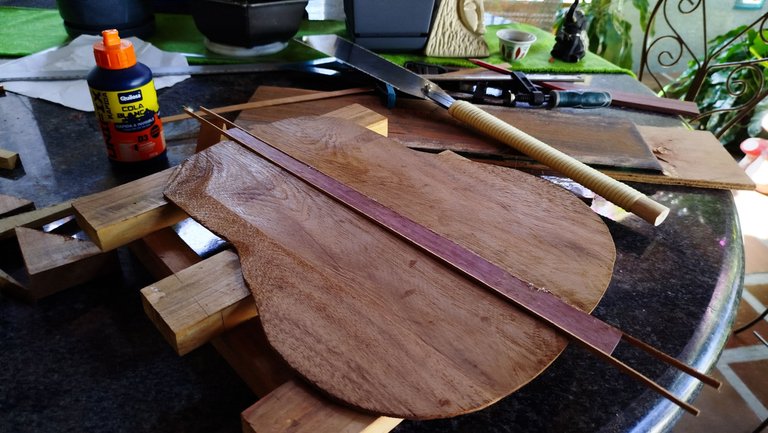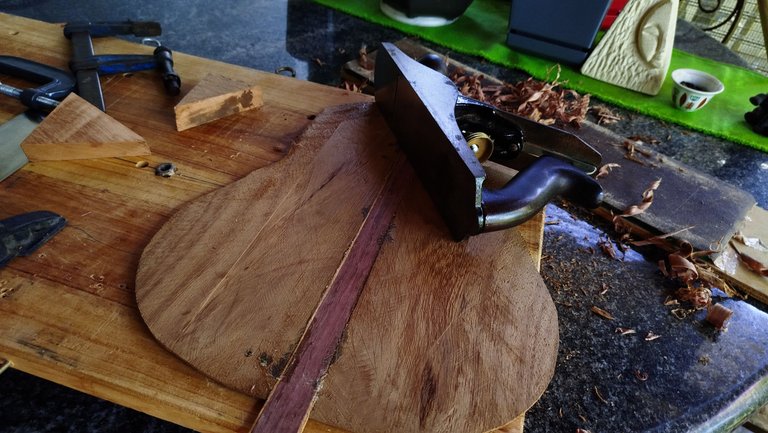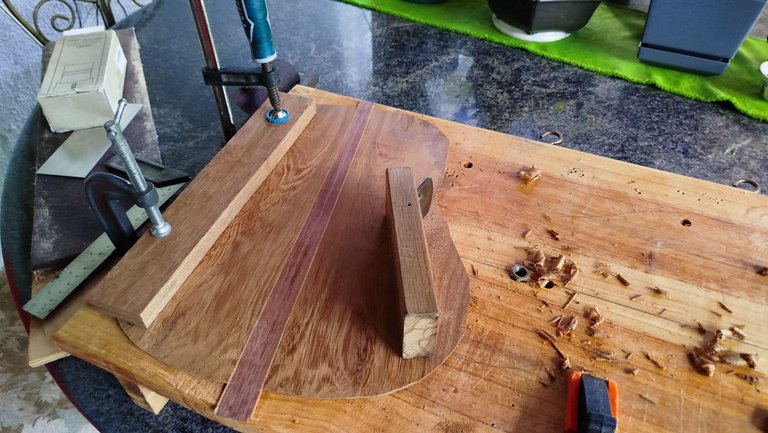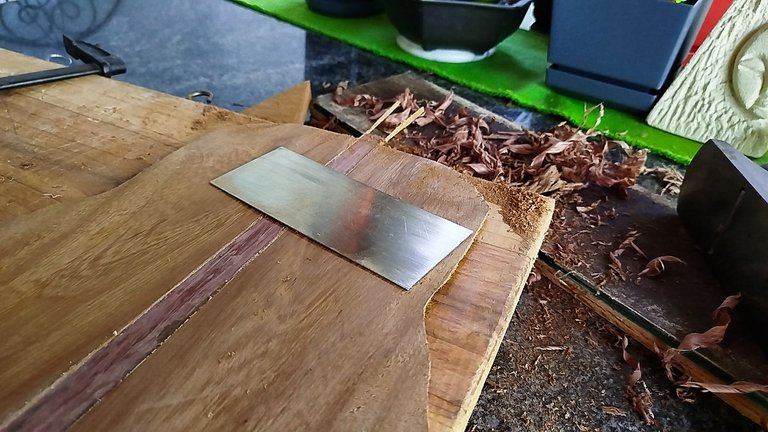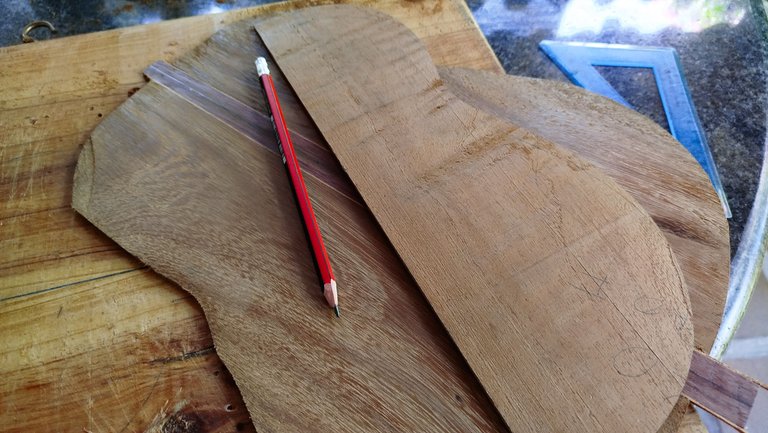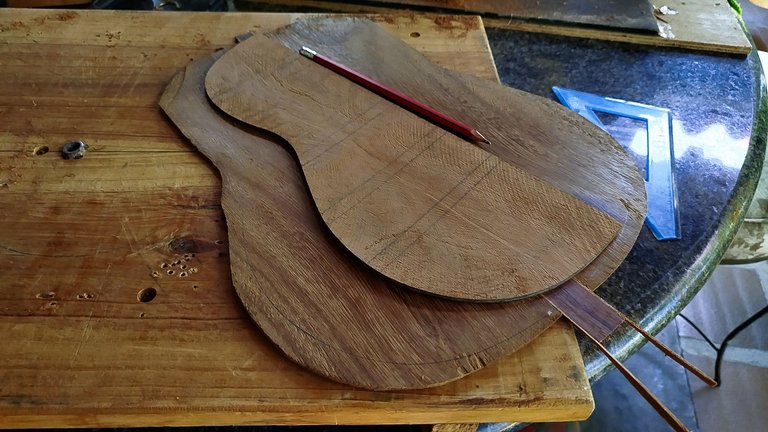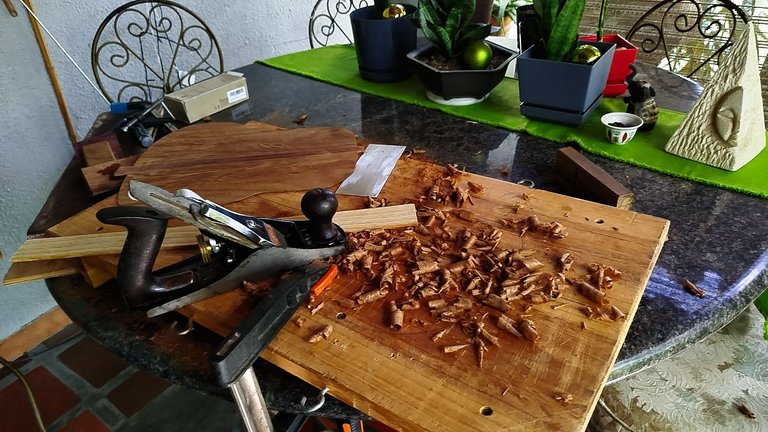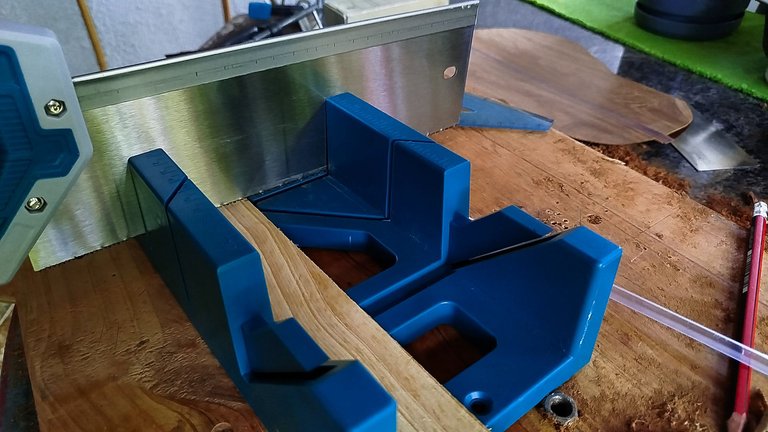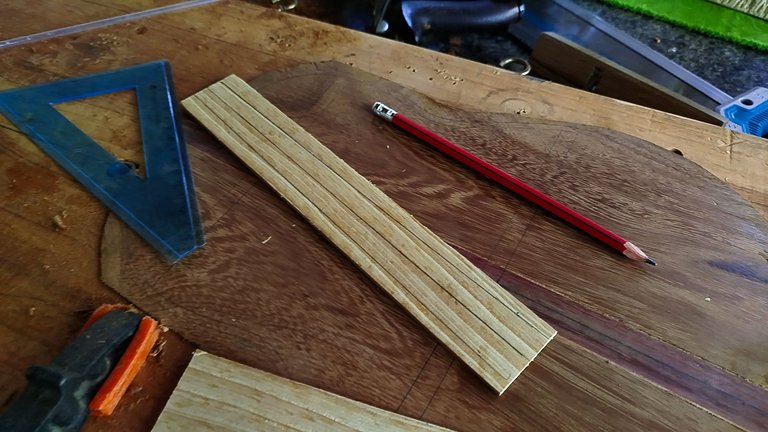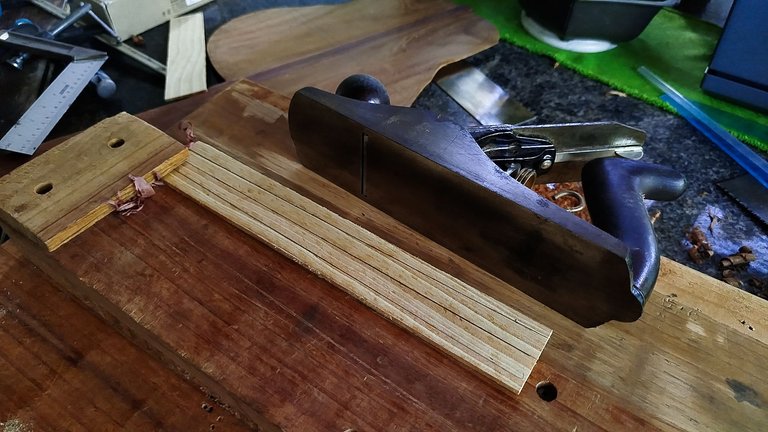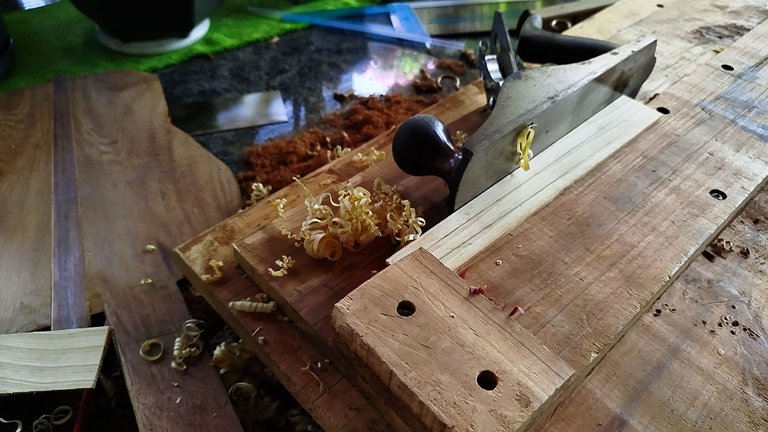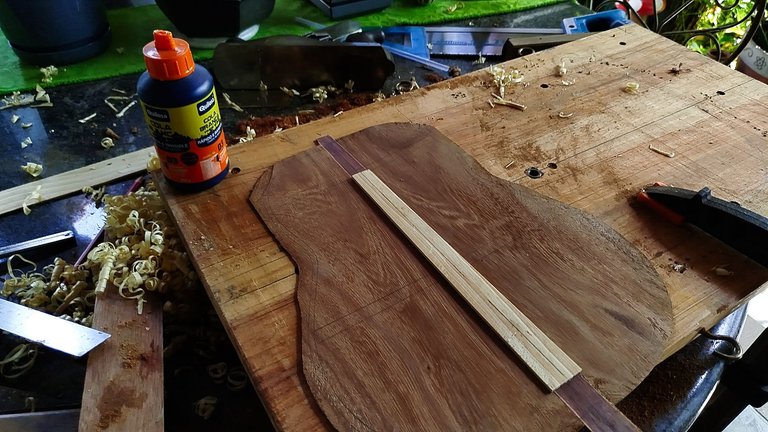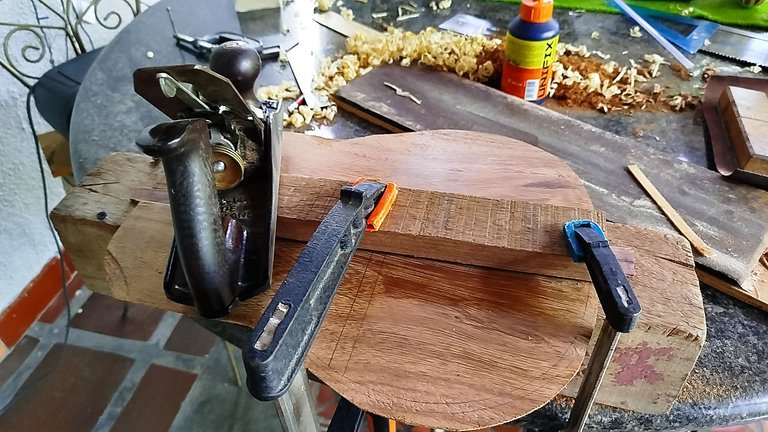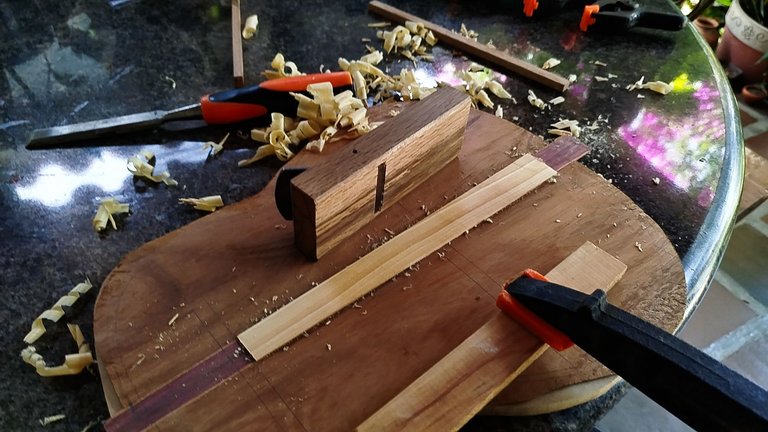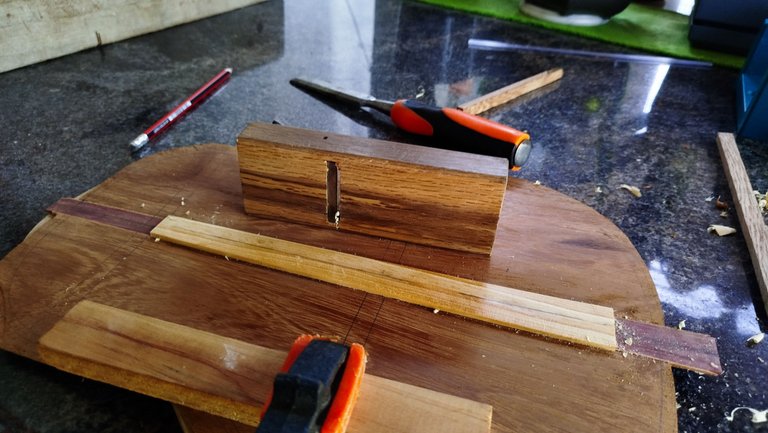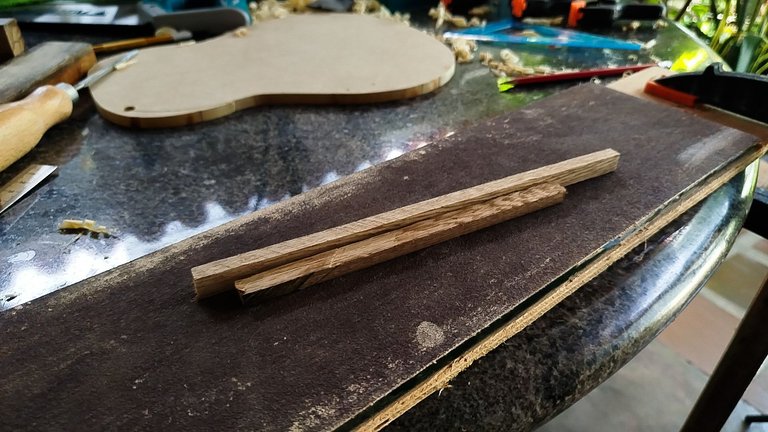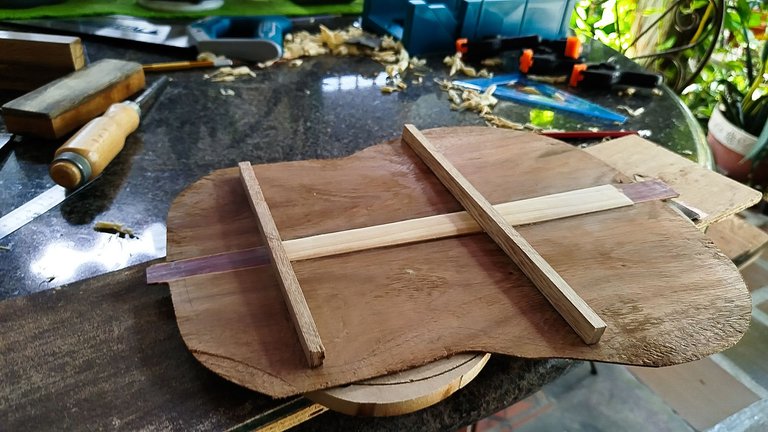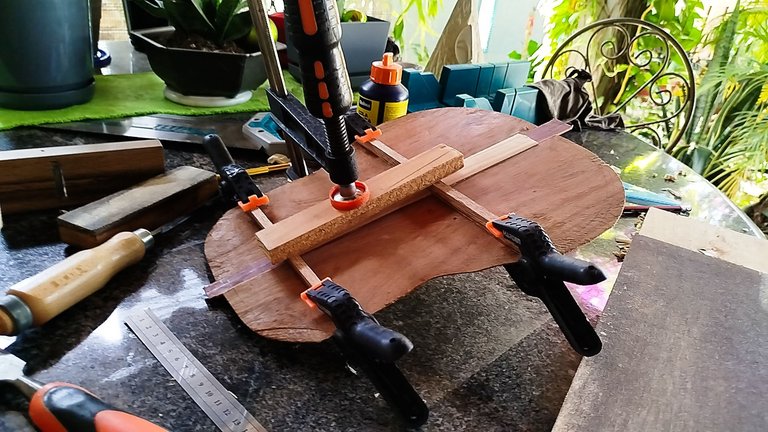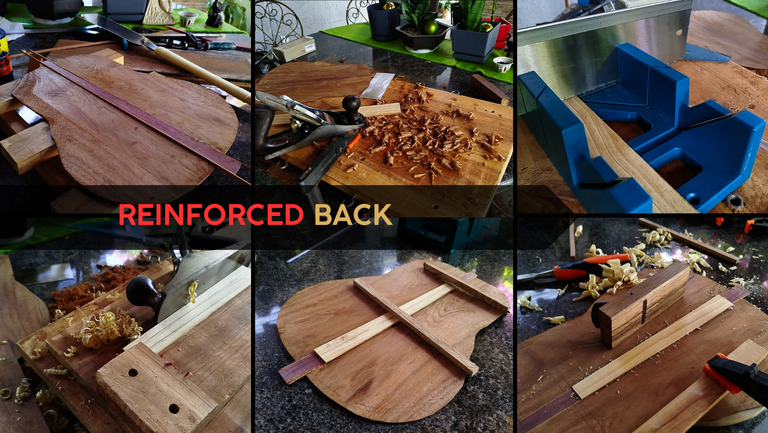

Last time we left this project, we had just made the works on creating a back with a middle strip of wood as ornament. Today, we are tackling the reinforcements for this part so we can give it shape and move on to the sides of the instrument.
Let's jump right to it!
Thicknessing
Once the back is out of the jig, it is time to work on both faces to remove those pesky cutting disk marks. The usual suspects are involved in the job alongside with some elbow grease to make it happen. Since this kind of wood has the issue of not having straight grain, we have to extra careful with the hand plane since we could tear out some of it. And we wouldn't want to. It could be a big tear or a little one. Both are bad.
After removing enough material with the hand plane, we can switch to the card scraper. This will help remove any scratch marks developed from the previous step. It is also the fine tuner of the thickness on this piece. Having a straight edge, it helps measure any cupping in the wood as we check how each section of the back is doing.
Using the scraper leads us to the easy part, marking the central line and taking the template to mark the curves and placement of the reinforcements.
Joint Reinforcement
Moving onto the next step, it is time to reinforce the joint between the pieces of the back and the ornament. To keep such a thing in place and preventing glue to fail on its duty, we need to give it some extra area to keep the bond between the parts. For that, we have to add a piece of wood for the reverse of the back. This will cover the whole ornament and take up part of the sides as well.
First, we cut a piece of wood to the length required. Then, we make a sketch of the shape needed on said wood. Next, comes the shaping process. Using the hand plane, we remove material from the reinforcement following the lines marked before. The process ends when the reinforcement has the shape it needs. Any extra work on the piece is left for the time it is already glued to the back. And of course, once the reinforcement is ready, we have to glue it in place.
With this in place, we can be sure the back won't split when the instrument starts to be in tension.
Bar set up
Let's end up the work for the day with the bar set up. We had already cut the bars back when we made the sound board. For now, the focus is in the joint reinforcement. We have to shape it. First, remove some material from the top with a hand plane. Them, a bit from the sides with a chisel. It can even be sanded to have a better look.
The next step is to mark the placement of the bars. For one of them, we'll need to make a cut in the reinforcement. We use a piece of a broken hacksaw for this working slowly and steady. We wouldn't want to damage the back. Once the cut is ready, we can remove the wood that is in the middle with a chisel. Then, we are set to place the bars. We start by sanding them on every side. Last but not least, we can apply glue and clamp them in place.
The other steps to follow to complete the back are shaping the bars and cutting some excess material to give it the curvy shape it needs. Those steps will come on the next entry as well as the beginning of the assembly process.
Thanks for reading! See you next time!

| Project milestones | Title |
|---|---|
| 1 | First Steps |
| 2 | Hints of a Sound Board |
| 3 | Sound Board Ends, Neck Begins |
| 4 | Head Stock and Heel |
| 5 | Carving the Heel |
| 6 | Flush Head Stock |
| 7 | Neck and Back |

Photos 📷: Redmi Note 13
Thumbnail 🖼️: Canva.
Editing 🎬:Adobe Photoshop Lightroom.


Follow me on Instagram for enquires and commission.
If you'd like to help the workshop grow, you can make a donation here. You can find me at discord as bertrayo#1763
